When formatting your Mac system, did you come across a tab telling you to choose a format? The Mac will format depending on the format you choose. The two main formats people use are Mac OS Extended and APFS. Mac OS Extended, also called HFS and HFS+, works on old Mac OS drives. It works best with mechanical drives and has a faster write speed. APFS on the other hand can be considered an optimized version of the Mac OS extended, and needless to say, it comes with better specs. So, while Mac OS Extended is a good option, compared to APFS, it is just a bit lacking. Now, what is the APFS format in detail?
What Is APFS Format
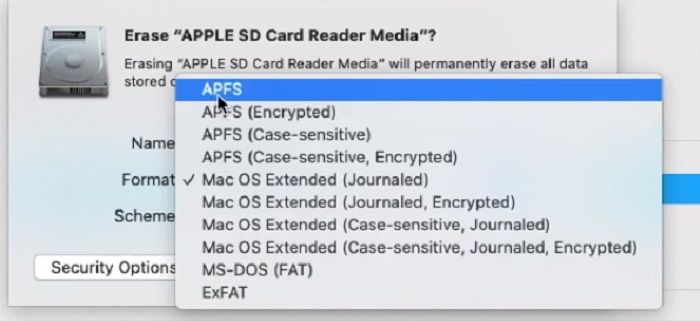
New updates beckon new updates, and sooner or later, the current supporting system will need even more updates. APFS (Apple File System) is Macintosh's new file system created to replace the old Mac OS Extended. It is an upgrade to the HFS+, and has more encryption. This format is always the best option for solid-state drives (SSD) and flash drives, and when it comes to reliability, APFS gets a plus. Why? Because of its advanced encryption, the chances of your file getting corrupted when formatting your system are reduced significantly.
The Benefits of APFS
- Security Enhancements: It has more secure data encryption, and this helps when it comes to file-sharing and transfer. Users who often share files will find this option advantageous for them. APFS uses multi-key encryption to keep all data safe.
- Faster Encryption: The encryption speed, whether it's processing or formatting, is fast. This comes as very great news for people with larger files. Copying and pasting files become more convenient with its insane speed. It makes for one of the reasons why APFS is a better choice when it comes to disk formatting.
- Crash Protection: System crash is a nuisance, no matter wherever. Plus, your system crashing would usually make you frustrated by the second. Imagine if you had something that should not be interrupted ongoing. APFS has better crash protection meaning your computer runs smoothly even after formatting.
- Lesser Risk of File Corruption: The APFS is an optimized file system and is still updated regularly. As such, the chances of your files getting corrupted during backup or restore are almost non-existent. It still happens since there are lots of reasons for file corruption, but the chance of that happening is now close to none.
How to Format Drive as APFS on Mac
When formatting your Mac, you need to set your goal if you are still keeping your Mac or you are erasing it to give it out. So, without further ado, let's get right into it:
Step 1. Restart Mac
Restart your Mac and once you hear the bootup tone, press and hold on;
- Command + R. That is if you are still going to keep using it yourself
- Command + Option + R. That is if you are going to give it out after formatting
Step 2. Open Disk Utility
Once the loading bar appears at the bottom of the apple logo, you can release the keys. Wait for the Recovery and select Disk Utility from the four options available.
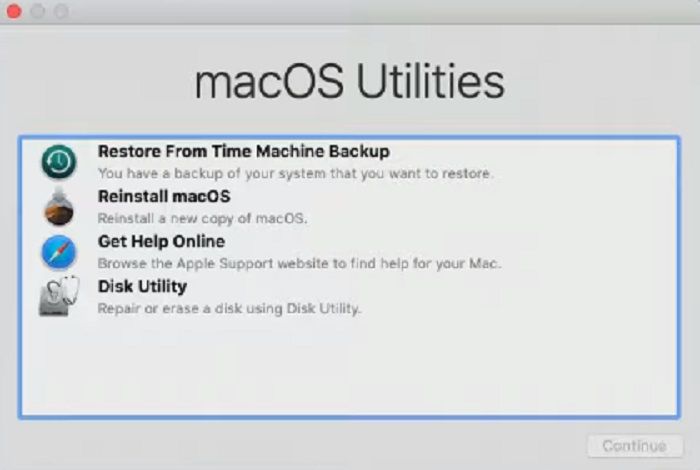
Step 3. Select Hard-drive and Erase
Note that the disk to format is the Macintosh HD and its partition folders Macintosh HD DATA. Anything else and you run the risk of spoiling your system. Select Macintosh HD and click on Erase.
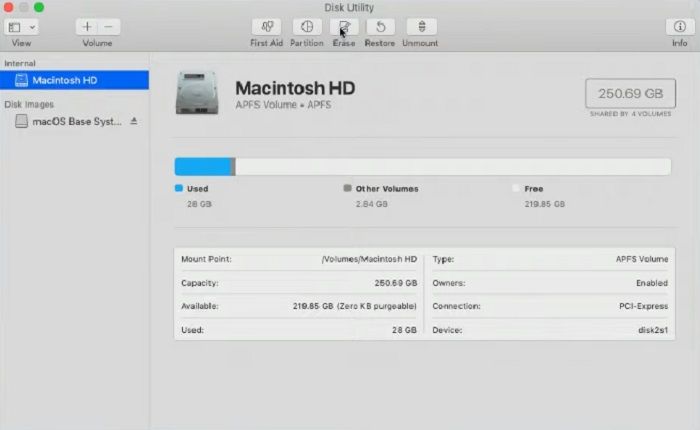
Step 4. Format as APFS
Mac with version 10.13 and later has the APFS format. Click on it and continue. For the partition files with -DATA, click on the folder and click on volume minus to delete it.
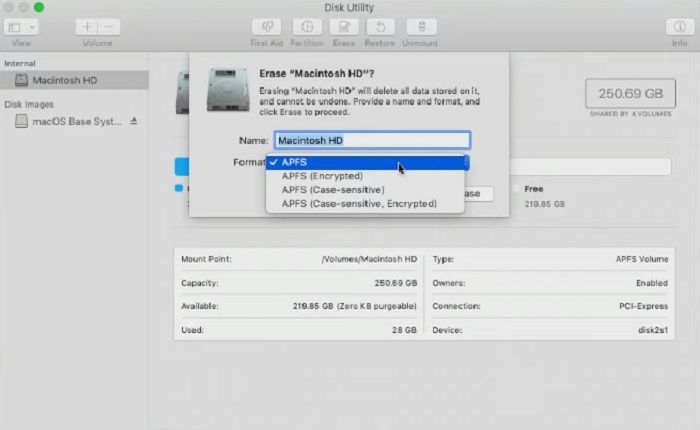
Step 5. Restart
Click on Disk utility at the top and quit. On the recovery page, click on Reinstall OS. Follow the prompts to reinstall your brand-new Mac, and if you are not going to continue using it, you can shut it down after reinstalling the OS.
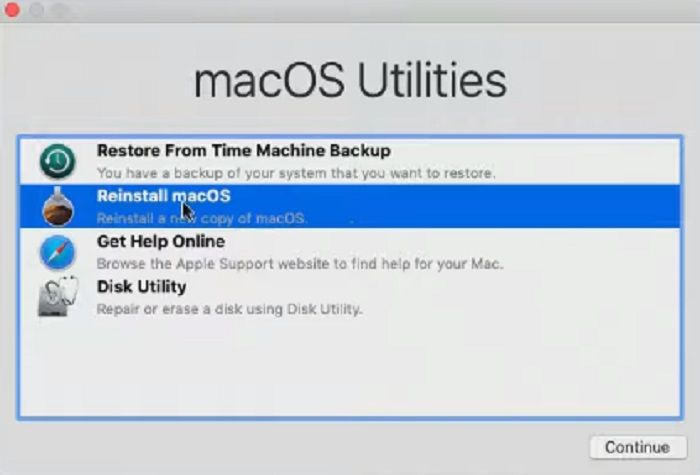
Final Verdict
In this article, we have gone through what is APFS format. Some of its most appealing features. However, this is not to say that the HSF+ is not good for disk formatting, but the APFS is just best because it is a reviewed and optimized file system format. Again, one should be careful when formatting their system.
APFS FAQs
1. Is APFS better than macOS Journaled?
In a way, yes. It is because new updates are undoubtedly better than any previous version.
2. Why did Apple switch to APFS?
As an upgrade to their system. APFS offers more file protection than Mac OS Extended could ever have. New systems updates require them to go through most of their security encryption and make changes to accommodate the updates.
3. How do I know if my Mac is APFS?
Basically, any system 10.13 and later have AFPS. It is an easy way to know if your system has APFS
Was This Page Helpful?
Daisy is the Senior editor of the writing team for EaseUS. She has been working at EaseUS for over ten years, starting as a technical writer and moving on to being a team leader of the content group. As a professional author for over ten years, she writes a lot to help people overcome their tech troubles.
Written by Tracy King
Tracy became a member of the EaseUS content team in 2013. Being a technical writer for over 10 years, she is enthusiastic about sharing tips to assist readers in resolving complex issues in disk management, file transfer, PC & Mac performance optimization, etc., like an expert.
Related Articles
-
Full Backup Advantages and Disadvantages [2024 Review]
 Rel/2024-01-11
Rel/2024-01-11 -
How to Use PC Health Check App on Windows
 Daisy/2024-01-11
Daisy/2024-01-11 -
Windows 11 Taking Forever to Install? Get Complete Guide to Fix Windows 11 Slow to Install Issue
 Tracy King/2024-01-11
Tracy King/2024-01-11 -
Hyper-V vs. VMware: Which Is the Better Choice for You?
 Brithny/2024-01-11
Brithny/2024-01-11
